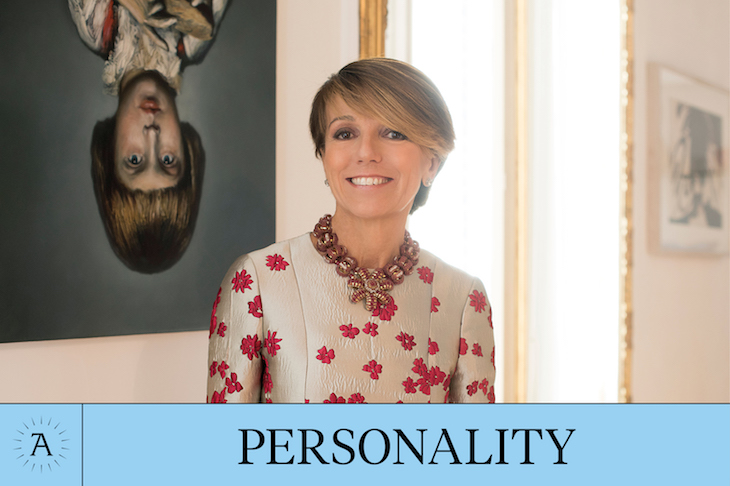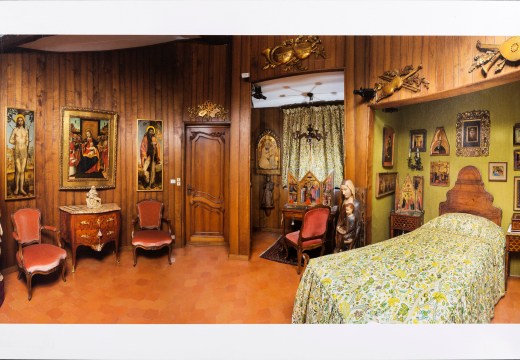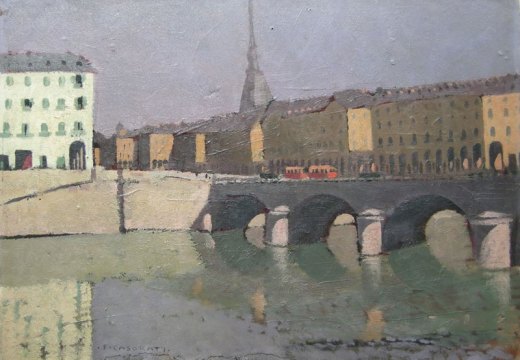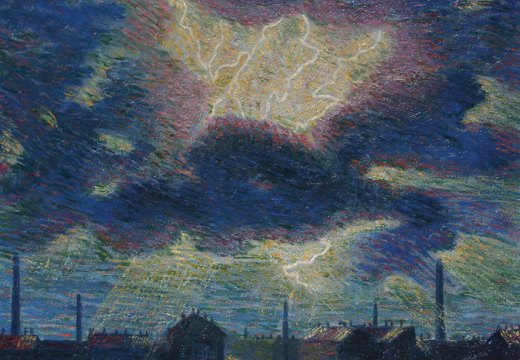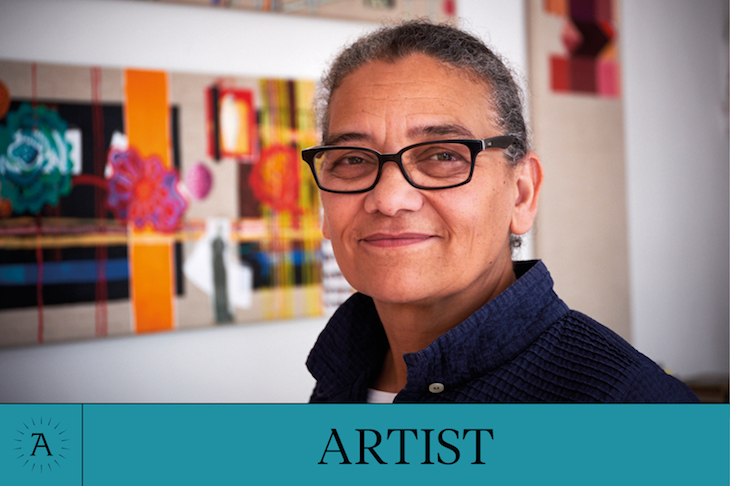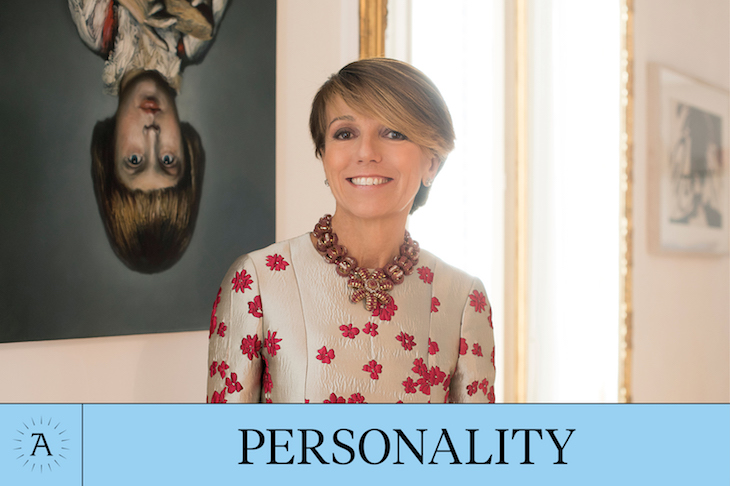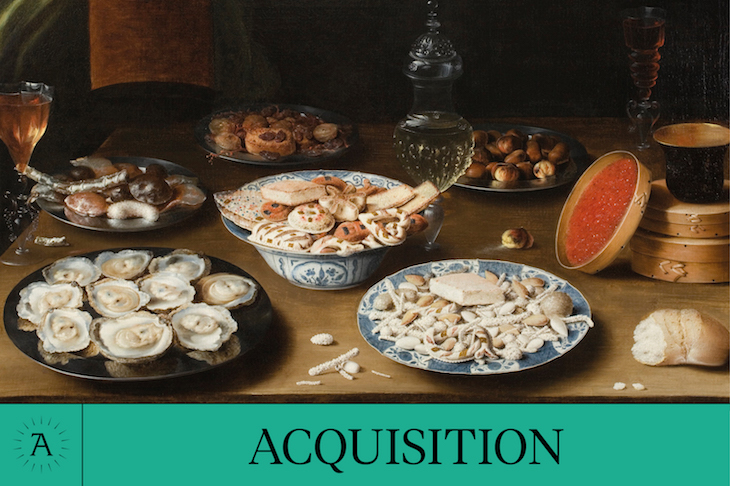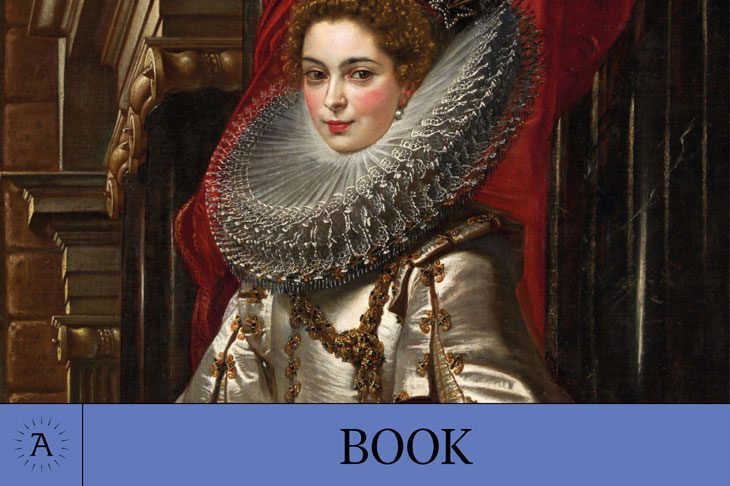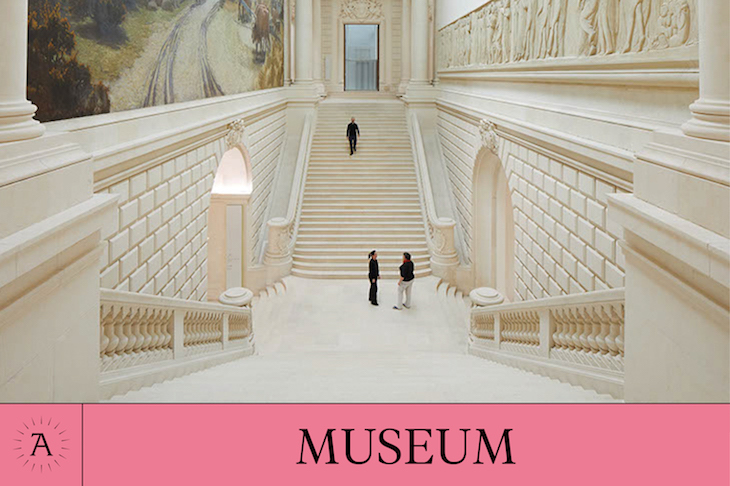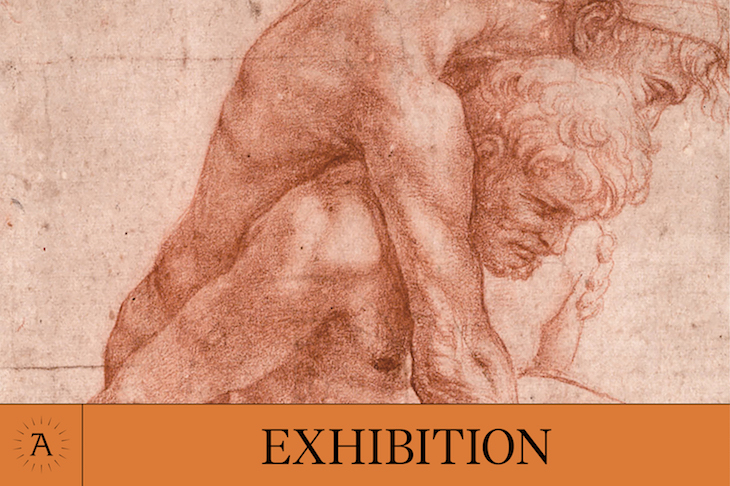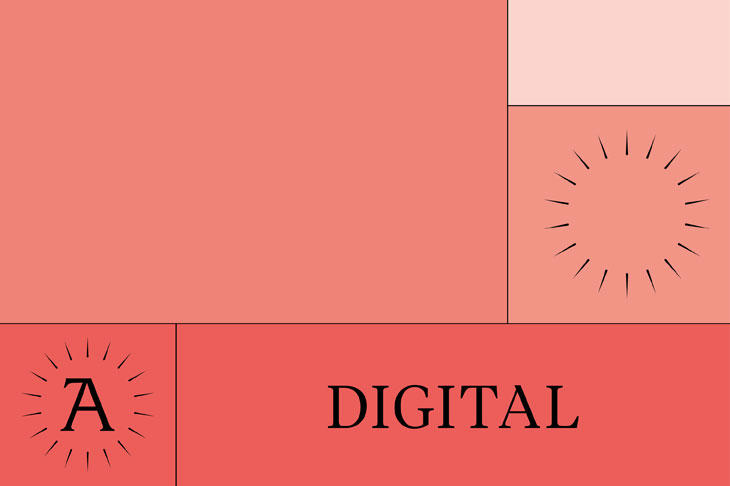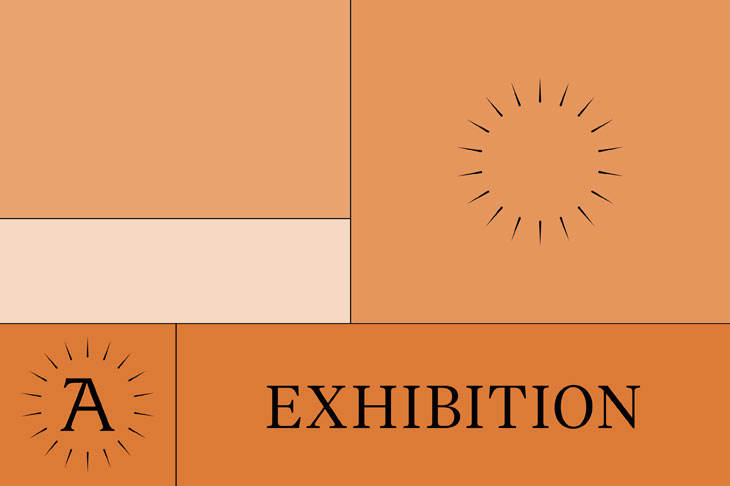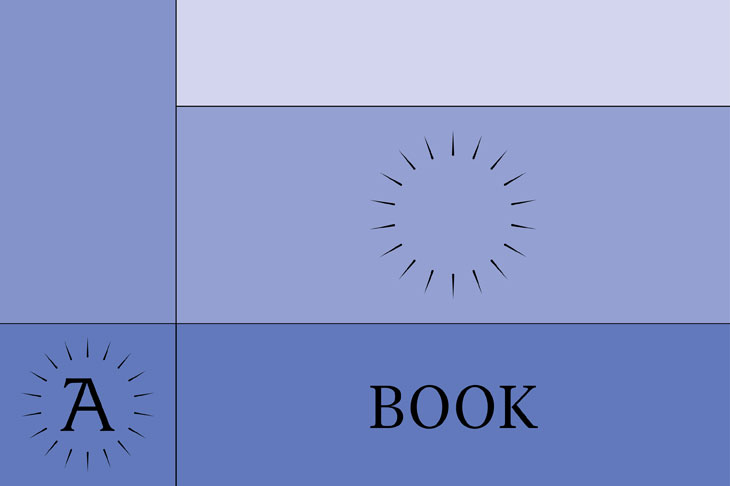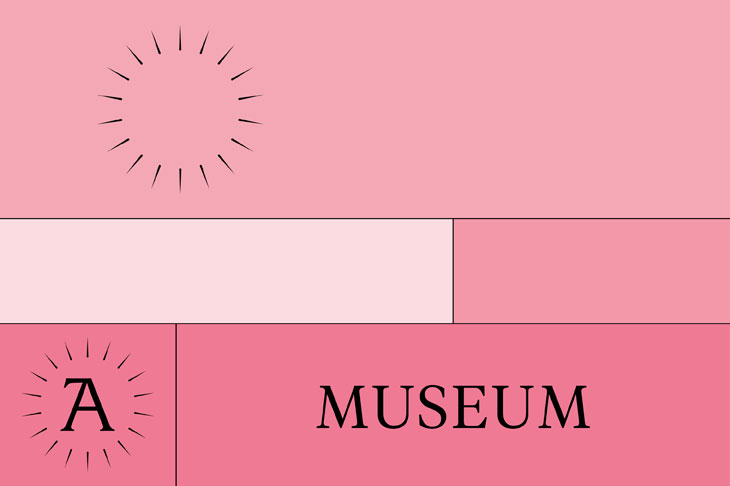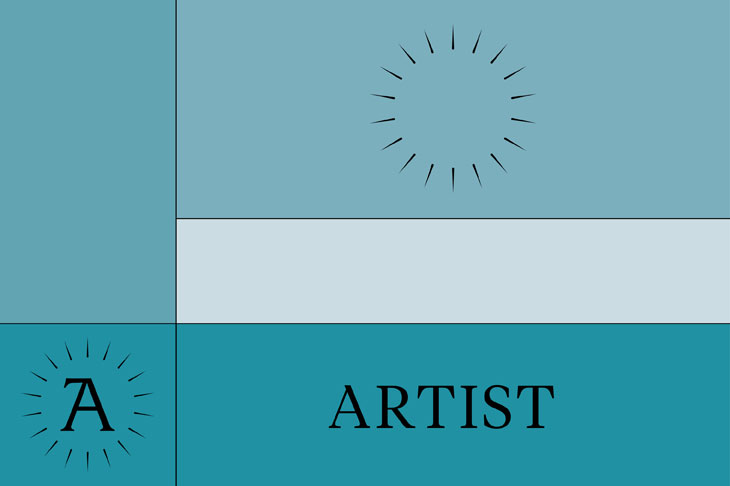Patrizia Sandretto Re Rebaudengo
The first time I met Patrizia Sandretto Re Rebaudengo, we had just been bundled into the back of a Land Rover outside Leeds. Between selecting the winner of the inaugural Hepworth Prize for Sculpture and its presentation at the Hepworth Wakefield that evening, Sandretto Re Rebaudengo and her fellow judges had taken the opportunity to visit Yorkshire Sculpture Park. On a bitter November afternoon, I joined them as we rattled around the site in the mud-splattered vehicle, eager to see as much of the park as possible before the light faded.
It seems appropriate to have encountered this collector and inimitable patron of the arts in such an unlikely context, and far from her eponymous, highly influential foundation in Turin. Of the many collectors I have met while editing Apollo, few have come across as so refreshingly unassuming, so dedicated to discovering and nurturing new talent and ideas, or so committed to the international possibilities of their patronage. In the year that she celebrates 25 years since starting her contemporary art collection, Sandretto Re Rebaudengo is a deserving – and perhaps overdue – winner of the Apollo Personality of the Year Award. As Tom Eccles, executive director of the Center for Curatorial Studies at CCS Bard, tells me, ‘Patrizia is one of those rare patrons and collectors who have a consistent vision for art and education, sustained over many years.’
Testament to Sandretto Re Rebaudengo’s influence (and her daunting work ethic) are her numerous achievements and announcements over the past 12 months. In May, she launched a collaboration between the Fondazione Sandretto Re Rebaudengo (FSRR) and the Philadelphia Museum of Art, to jointly commission and acquire an artwork in time-based media every two years, the first of which will be a large-scale video installation by Rachel Rose; in September, she revealed plans to establish a seat of the foundation in Madrid; and in October, she was named the president of the Fondazione IEO-CCM, a centre in Milan specialising in cancer and cardiovascular research. Works from her collection are currently on display at the Trondheim Kunstmuseum in Norway (until 30 December), and since November, ‘Like a Moth to a Flame’, an exhilarating exhibition installed in the vast industrial spaces of the newly revamped Officine Grandi Riparazioni (OGR) complex in Turin and curated by Eccles, Mark Rappolt, and the artist Liam Gillick, has placed some 70 further pieces from the collection in dramatic juxtaposition with historical works and artefacts drawn from Turin’s celebrated museums (until 14 January 2018).
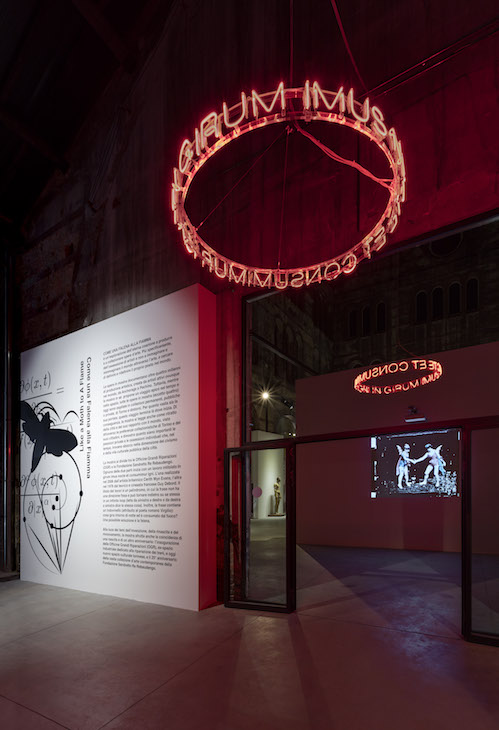
Installation view of In Girum Imus Nocte et Consumimur Igni (2006), by Cerith Wyn Evans (b.1958), OGR Turin. Courtesy Fondazione Sandretto Re Rebaudengo, Turin
Sandretto Re Rebaudengo’s passion for collecting began 25 years ago when, during a trip to London, she first went to Lisson Gallery and began visiting the studios of artists, including those of Tony Cragg and Anish Kapoor. These were formative experiences, not least because they made her appreciate the value of talking to artists, better to understand their work and their requirements for it. Even at this early stage, she was conscious that acquisitions might entail public opportunities. ‘Since the beginning,’ she tells me, ‘I felt the desire to share my collection with a wider audience, so that many people could get to know it. I wanted to give back to society the great gifts that I’d received from artists – being so lucky to know many of them personally and to establish true friendships with them.’
Although there is a historical aspect to the collection, with its important holdings of around 3,000 photographs dating from the mid 19th century onwards, the majority of the pieces are ‘works by living artists that had just been realised when I bought them’. ‘To begin with my collection was very “generational”,’ she says. ‘I was interested in what artists of my age thought and did, in the way artists from my generation saw the world in which we were living. Through them, I learnt to look ahead, to understand art being created by younger generations, and the themes and practices that interested them. I learnt not to be afraid of what I didn’t understand at first sight. I learnt that art has the capability to communicate to us what is strange, unfamiliar, and obscure too.’
Initially her collecting focused on five strands – British art, artists working in Los Angeles, Italian art, women artists, and photography. But Sandretto Re Rebaudengo welcomes the fact that, more recently, ‘the possibility to reach so many artists from so many different countries and cultures’ means that she ‘can no longer categorise my collection by nationality, genre, or ways and means of expression’. This is not to say that additions to the collection merely follow art market trends; they are the outcome of research, reading, conversations with artists, critics and curators, and above all ‘seeing art as much as possible’. ‘For me, an interesting work of art captures the present, anticipates the future and, in the future, will tell a story of the past,’ she says. ‘I try not to buy works by acclaimed artists or by the usual “key players”. I don’t buy names but works.’ What is striking, here as in her other decision-making, is Sandretto Re Rebaudengo’s sense of responsibility to artists and the infrastructure that supports them: she always buys from galleries, she explains, as they are ‘a fundamental link in the contemporary art system’.
In 1995, a few years after she started collecting, Sandretto Re Rebaudengo chose to formalise her feeling for the communicative potential of contemporary art with the inauguration of the Fondazione Sandretto Re Rebaudengo. In the early years, exhibitions were staged at the 18th-century Palazzo Re Rebaudengo in Guarene d’Alba, a small town in the Roero hills, some 50km south of Turin. (The building is the family seat of Sandretto Re Rebaudengo’s husband, Agostino Re Rebaudengo, who is the founder of the Asja Ambiente Italia renewable energy company.) In 2002, a second location opened in Turin: the Centro per l’Arte Contemporanea, an elegantly functional exhibition centre designed by Claudio Silvestrin, with large, flexible galleries arranged in a linear fashion on a single level.
There, the foundation now runs a busy and innovative programme, with three major exhibitions a year and numerous special projects and events. The highlights of 2017 have included ‘Le Notti Bianche’, the debut display of an evocative series of black-and-white photographs by Hiroshi Sugimoto, showing the empty auditoriums of historical Italian theatres. At present, a solo exhibition by the young Russian émigré artist Sanya Kantarovsky explores post-war Soviet housing through large, grotesquely observed paintings and an arresting theatrical mural (until 25 February 2018).
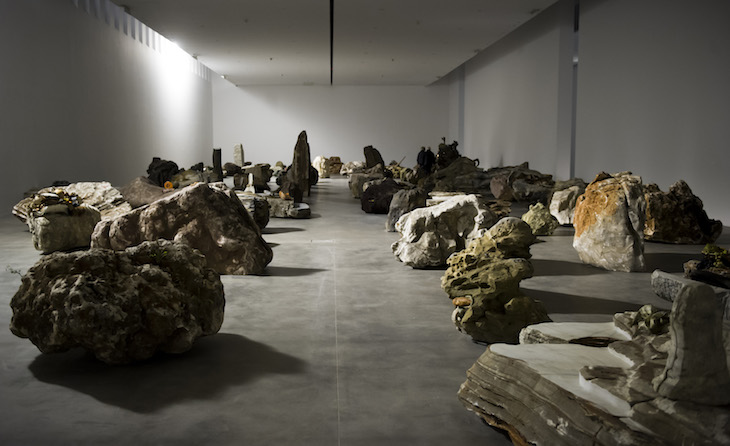
Installation view of Rinascimento (2015) by Adrián Villar Rojas (b. 1980), Fondazione Sandretto Re Rebaudengo, Turin. Courtesy Fondazione Sandretto Re Rebaudengo, Turin
‘We pay attention to work by artists who are radically changing our vision of the world,’ says Sandretto Re Rebaudengo, citing recent exhibitions by the British digital artist Ed Atkins and the Argentinian wunderkind, Adrián Villar Rojas, who in 2015 installed 109 boulders transported from Turkey – raw, imposing plinths for a series of sculptures made from found objects – in the otherwise emptied building in Turin. Alongside the exhibitions, and indeed fundamental to their impact, is a sustained drive to help visitors understand the often challenging premises of the contemporary art championed by the foundation. Besides workshops and educational activities for children, adults and disabled people, there are the foundation’s ‘art mediators’, specially trained members of staff whose job is to discuss the works with the public, as they wish or require. In this focus on education, Sandretto Re Rebaudengo is a pioneer among private collectors: ‘In terms of offering a significant cultural experience to the public, I think that just opening a space and making your collection visible is not enough,’ she says. ‘Collectors have to give visitors the tools to approach, interpret, and understand what they see, otherwise it’s just a showcase of their property.’
But exhibitions are just one strand of the FSRR’s activity. In keeping with the inspiration she has drawn from them, Sandretto Re Rebaudengo has given extensive practical support to artists, allowing them the freedom to explore ideas and create new works – and scope to fulfil their ambitions at a critical stage in their careers. ‘I think it is necessary to be brave, to take risks, to invest seriously in the new […] This is what happens when you commission a new work: you don’t know the outcome yet, but you trust the artist and bet on the future, which is the only way to really make a difference and be part of the production process.’ In her case, this does not only involve commissions for the FSRR, but collaborations with international exhibitions such as Documenta and the Venice Biennale, and funding to produce individual works. For this year’s Biennale, the foundation ‘produced’ WeltenLinie by the Polish artist Alicja Kwade, a walk-through installation that set rocks, petrified wood and other totem-like objects in mirrored, quasi-domestic spaces.
Of the works that the FSRR has helped to produce, Sandretto Re Rebaudengo draws attention to major moving-image pieces, including Doug Aitken’s New Ocean (2001; in collaboration with the Serpentine Galleries) and Zidane: A 21st Century Portrait (2006; with Anna Lena Films), the feature-length film by Douglas Gordon and Philippe Parreno that scrutinised the French footballer Zinedine Zidane for the course of an entire match. ‘That project really impressed me,’ she says. ‘Their idea was that a contemporary portrait should not be “oil on canvas”, but rather a video. So they took 17 cameramen to the Prado, to show them portraits made by the great masters, and then they asked them to shoot the Villareal-Real Madrid match, focusing on Zidane for the full 90 minutes.’ More recently, the foundation has worked with Ian Cheng on Emissary in the Squat of Gods (2015; the first chapter of his Emissary trilogy), a two-channel ‘ecosystem’ that has been programmed to develop itself, as a means of exploring cognitive evolution in an imaginary digital world. ‘Seeing the entire trilogy presented at MoMA PS1 in April was very emotional for me,’ says Sandretto Re Rebaudengo.
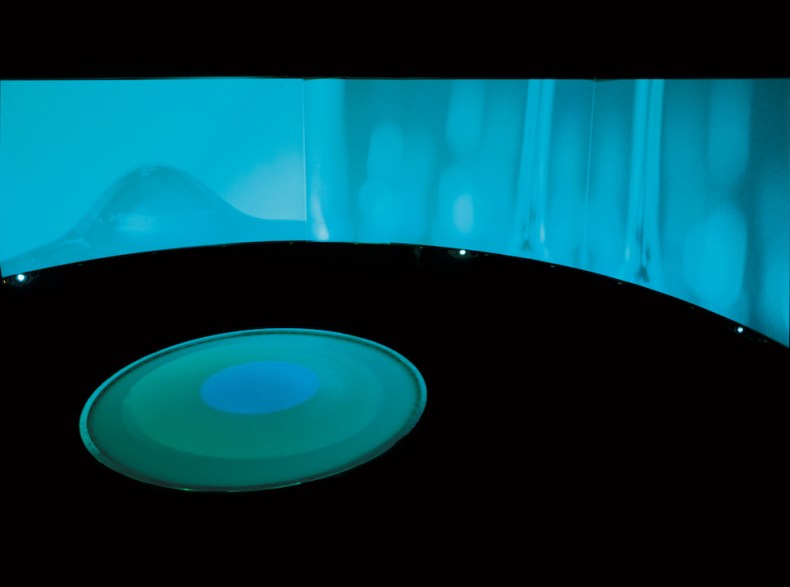
Installation view of New Ocean (2001), by Doug Aitken (b. 1968), Fondazione Sandretto Re Rebaudengo, Turin. Courtesy Fondazione Sandretto Re Rebaudengo, Turin
Beyond the artists, there is sustained support for curators. Every year, the FSRR invites three young curators from outside Italy for a four-month residency that culminates in an exhibition of Italian artists in the galleries in Turin. Indeed, this feeling of forging an international network for contemporary art, with Turin as one of its pole stars, is fundamental to much of Sandretto Re Rebaudengo’s work. It informs her willingness to sit on countless judging panels and advisory boards around the world (among them the Tate and MoMA international councils), and to exhibit her collection as far and wide as possible – including, in 2015, in Sheffield Cathedral as part of the ‘Going Public’ initiative led by Museums Sheffield. Her collection is on an extended loan to the FSRR to facilitate collaboration with international partners, and works are always loaned to other institutions for free. As she admits, though, ‘I have a moment of dismay when I have to remove them from my home.’
The Fundación Sandretto Re Rebaudengo Madrid will be another strand in this international conversation. Its founder selected Spain, she tells me, because she considers it to be her ‘second homeland’, and is a country in which several exhibitions of her collection have been met with acclaim. ‘Madrid is a great global capital,’ she says, ‘because it’s a bridge to Latin America, which plays such a leading role on the contemporary art scene today.’ In Nave 9, part of the former slaughterhouse building known as Matadero Madrid and now a centre for contemporary culture, David Adjaye will collaborate with Arturo Franco to design galleries for temporary exhibitions and for displaying the collection, as well as residency spaces for artists and curators, and further visitor facilities. The new venue is scheduled to open in 2019.
But for now, it seems appropriate that Sandretto Re Rebaudengo is being celebrated at the OGR in Turin, in an exhibition that places her in the great tradition of collectors who have left such a legacy to the city. In the post-industrial context of the past 25 years, she insists, the city has ‘found a new identity, which has set it among the capitals of European culture’. Patrizia Sandretto Re Rebaudengo has been at the forefront of that achievement.
Thomas Marks
 The Winners | Personality of the Year | Artist of the Year | Museum Opening of the Year | Exhibition of the Year | Book of the Year | Digital Innovation of the Year | Acquisition of the Year | View the shortlists
The Winners | Personality of the Year | Artist of the Year | Museum Opening of the Year | Exhibition of the Year | Book of the Year | Digital Innovation of the Year | Acquisition of the Year | View the shortlists
Unlimited access from just $16 every 3 months
Subscribe to get unlimited and exclusive access to the top art stories, interviews and exhibition reviews.

